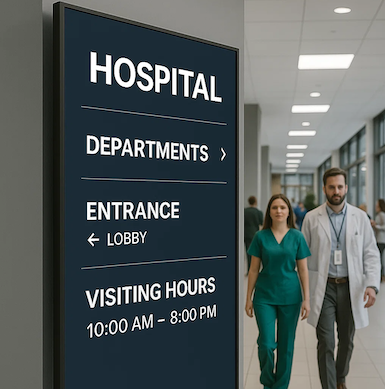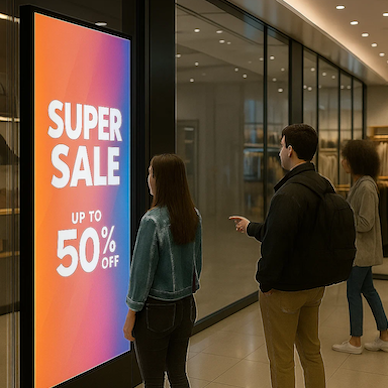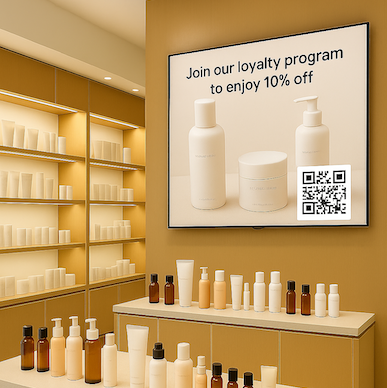Importance and Methods of Displaying Real-Time Data on Manufacturing Floors
You can greatly boost your manufacturing floor's efficiency by displaying real-time data, as it enables you to make faster decisions, reduce downtime, and increase operational efficiency. With instant visibility into performance, you can respond quickly to production changes, optimize processes, and improve product quality.
To get started, you'll want to choose the right display method for your team's specific needs, such as digital dashboards, scorecards, or other dynamic content. By selecting the most effective display method, you'll be better equipped to tackle production challenges head-on - and open up even more benefits by exploring the full range of real-time data display options.
Benefits of Real-Time Data Display
By displaying real-time data on manufacturing floors, you give production teams instant visibility into their performance, enabling them to make data-driven decisions that drive efficiency and productivity. You're empowering them to respond quickly to changes in production, identify bottlenecks, and optimize processes. With real-time data at their fingertips, operators can adjust their workflow to meet production targets, reduce waste, and improve overall quality. You'll also see an increase in employee engagement and motivation as they take ownership of their work. By giving them real-time feedback, you're encouraging them to aim for excellence. Additionally, real-time data display promotes a culture of transparency and accountability, where everyone is on the same page and working towards common goals.
Types of Real-Time Data to Display
Now that you've empowered your production teams with real-time data, the next question is what types of data should you display to maximize its impact on your manufacturing floor? You should focus on displaying data that drives immediate action, improves decision-making, and aligns with your business goals. For instance, displaying production schedules, inventory levels, and equipment performance helps your team stay on track and identify potential bottlenecks. Moreover, you should display metrics that measure production quality, such as defect rates, inspection results, and customer feedback. These metrics enable your team to identify areas for improvement and make data-driven decisions. You should also consider displaying safety metrics, such as incident rates, near misses, and compliance tracking, to foster a culture of safety and accountability. In addition, displaying labor productivity, equipment utilization, and overall equipment effectiveness enables your team to optimize resource allocation and improve efficiency.
Choosing the Right Display Method
Your next step is to determine the most effective way to visually communicate real-time data to your production teams, selecting a display method that grabs their attention, conveys complex information at a glance, and drives action. You want to evaluate the specific needs and workflow of your production teams, as well as the type of data being displayed. For instance, if your team is highly mobile, you'll want a display method that can be easily accessed from anywhere on the floor. On the other hand, if your team is stationary, a fixed display may be more suitable. You'll also want to think about the level of interactivity required. Do you want your team to be able to input data or adjust settings directly from a computer? Will a simple, read-only display suffice? Answering these questions will help you narrow down your options and choose a display method that's tailored to your team's unique needs and work style. By doing so, you'll be able to maximize the effectiveness of your real-time data display and drive meaningful improvements in productivity and efficiency.
Digital Signage and Display Options
Digital signage and display options come in a wide range of formats, each with its own strengths and suitability for different manufacturing environments. When choosing a digital signage solution, you'll want to evaluate the specific needs of your production floor. If you have a large facility, overhead displays might be the way to go, providing real-time data to a wide audience. You will also want to ensure your display and hardware components are built to withstand the production environment. You'll also want to think about the type of data you want to display. If you're tracking production metrics, a simple LED display might suffice. Whichever solution you choose, make sure it's easy to read, understand, and update. The goal is to provide your team with real-time insights that help them work more efficiently, so choose a display option that fits your production floor's unique needs.
Using Andon Systems for Display
Implementing Andon systems on the manufacturing floor alongside digital displays enables production staff to instantly identify areas that require attention. You'll be able to quickly pinpoint bottlenecks, equipment failures, and quality issues, allowing you to take corrective action and minimize downtime. Andon systems use visual displays, such as lights, colors, and graphics, to provide an at-a-glance view of production performance, making it easy to understand complex data.
Implementing Data Visualization Tools
You frequently rely on data visualization tools to simplify complex manufacturing dat*, helping you access valuable insights that inform swift decision-making and drive significant improvements on the production floor. In order to implement these tools effectively, you need to choose the right software that can handle real-time data and is compatible with your existing systems. You'll also want to weigh the types of visualizations that will best communicate key metrics and trends to your team. Once you've selected the right tool, you'll need to design a dashboard that's intuitive and easy to use. You'll want to prioritize the most critical metrics and KPIs, using clear and concise labels to avoid confusion. Reflect on creating custom views for different roles or departments, allowing each team to focus on the data that matters most to their work.
Overcoming Common Implementation Challenges
As you put data visualization tools to work, the road to realizing their full potential is often paved with obstacles that can hinder even the most well-planned implementations. It is imperative to anticipate and overcome common challenges that may arise. You'll encounter resistance from employees who are hesitant to adopt new technologies or fear their jobs will become obsolete. To address this, it's vital to educate them on the benefits of data visualization and involve them in the implementation process. Additionally, technical issues can arise, such as data quality problems, system integration challenges, and scalability concerns. You'll need to develop a robust infrastructure that can handle large amounts of data and guarantee seamless integration with existing systems. Establishing a cross-functional team with IT, operations, and maintenance personnel will also help to identify and address technical issues promptly. By being proactive and collaborative, you can overcome common challenges and release the full potential of data visualization on your manufacturing floor.
In Conclusion
You've seen the benefits of displaying real-time data on manufacturing floors, from increased efficiency to improved decision-making. By choosing the right display methods, such as digital signage, or data visualization tools, you can empower your team to act on up-to-the-minute information. Don't let implementation challenges hold you back - overcome them and start reaping the rewards of real-time data display today.
Make data-driven decisions and drive your operation forward.
See it in Action
Get a free, no-pressure demo of our unique platform and find out how it can transform your business.









